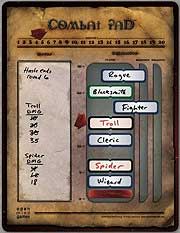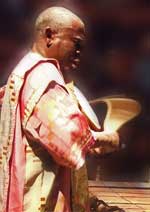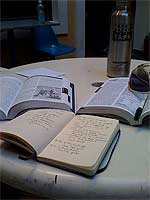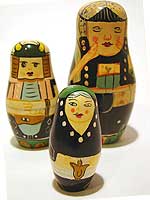Abandoned gold mines. Orc raiders. Cave-ins and a dark, mysterious past. Gold Strike! the winner of 6d6 Fireball‘s Autumn Adventure Writing Competition brings us that and more.
This d20/D&D 3.x adventure sends three to five 4th – 6th level characters down an abandoned gold mine to rescue a group of miners trapped by a cave-in. But as is often the case with adventures, things are not completely what they seem. I’m going to do my best to review this without giving spoilers. This review is based on a playtest my group and I did of the adventure.
The Good
The setting of the adventure is one I don’t see used a lot in fantasy adventures — a mine cave-in. Much of the challenge of the adventure comes from being in an unstable and very deep cave environment. This was a refreshing change from fighting drow and deep cave monsters. The monster encounters that adventure did have were, on the whole, appropriately challenging and made sense.
I give big kudos to the person who designed the layout of the PDF. It may seem a minor thing, but this is the first adventure I’ve run in a quite a while where I didn’t spend half the gaming time flipping pages to reference on thing or another. I loved having the little maps next to the descriptions of an area.
The side notes listing the skill checks needed for any particular event were a real help, as were having the encounter tables in the adventure’s margin. The wide left margin also gave me plenty of room to write corrections and notes. The layout was so helpful, I’ll be looking for other adventures published by 6d6 Fireball on the basis of that alone. And the addition of core book page numbers for monsters, treasure, and other things the DM might want to reference is a very welcome addition.
The Bad
The names. While the NPCs are well-suited to the adventure, my group had a field day with their names. Even I had a hard time saying some of them with a straight face. “Junior” was fine, if a bit odd in a fantasy setting. “Jumpy” and “Furd” were harder, but even I lost it when it came to “Bark”, “Mourne”, and “Bonksi”.
Also, some class or skill suggestions would’ve been nice in the GM notes. The play test party consisted of a rogue, a barbarian/fighter, and a warlock, all non-dwarves and all 5th level. Not a survival skill among them and the party should have either a dwarf or someone skilled with either dungeoneering or underground survival. And some check DCs seemed rather high. At one point, the PCs are asked to make a DC 2 4 Survival check, which seems a little high for 4-6th level characters.
The adventure could also use some more consistency checking. At one point the PCs approach a camp with the description “The fire you saw in the distance is hidden by the stone walls.” If it’s hidden by the walls, how can the PCs have seen it in the distance? At another point a tunnel is described as being 6′ high and 2′ wide, but further down, it’s described as being “less than 4′ tall.”
The point to remember here is that this is a playtest version of the adventure. It’s going to have inconsistencies and imbalances until playtesting is complete. There are quibbles, but no major flaws — there’s nothing in this adventure that couldn’t be cleaned up after a few rounds of playtesting.
The Ugly — not!
On the whole, I think this is a great adventure idea. Both my players and myself enjoyed the change of pace from the usual “fight monsters, steal treasure” underground adventures. While there are still some problems to be ironed out, they’re changes that can be easily made before the final version is printed. The sequence of events is interesting and logical.
The layout of the adventure itself is definitely not ugly. It’s one of the easiest adventure printings I’ve ever used, keeping page turning to a minimum, whether that’s in the adventure itself or in the core rulebooks.
On the whole, I recommend this adventure. Recongnize that it’s a playtest document and either make notes or tweak the adventure accordingly.
Oh, and be sure to brush up on multiple skill checks and survival skills before you go. 😉

 keep track of who’s doing what and when.
keep track of who’s doing what and when. But what about those of us without laptops? Luckily,
But what about those of us without laptops? Luckily,  (Image courtesy of
(Image courtesy of  Homowo or “Hoot at Hunger”
Homowo or “Hoot at Hunger” We all struggle with it (well, at least many of us struggle with it) — how do you write an adventure that your players will love? Here’s a collection of adventure creation resources available on the web:
We all struggle with it (well, at least many of us struggle with it) — how do you write an adventure that your players will love? Here’s a collection of adventure creation resources available on the web:




